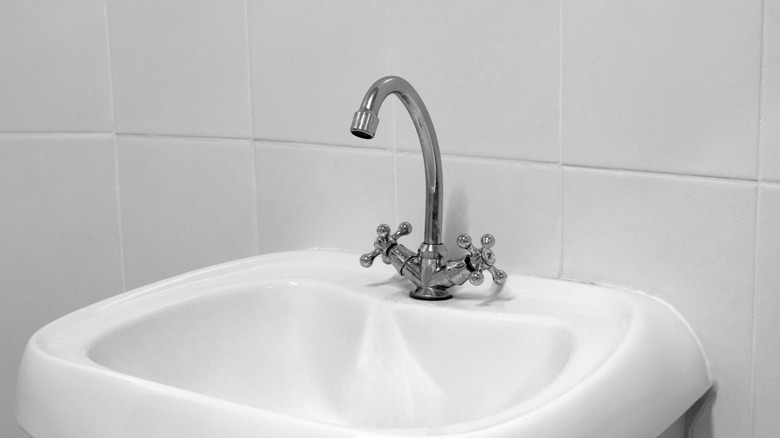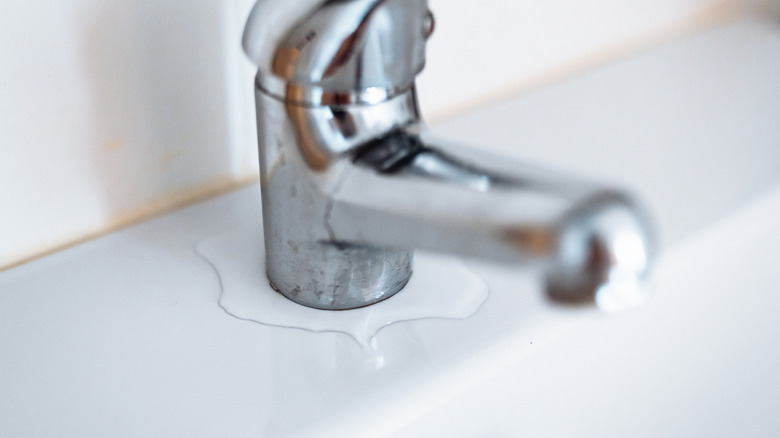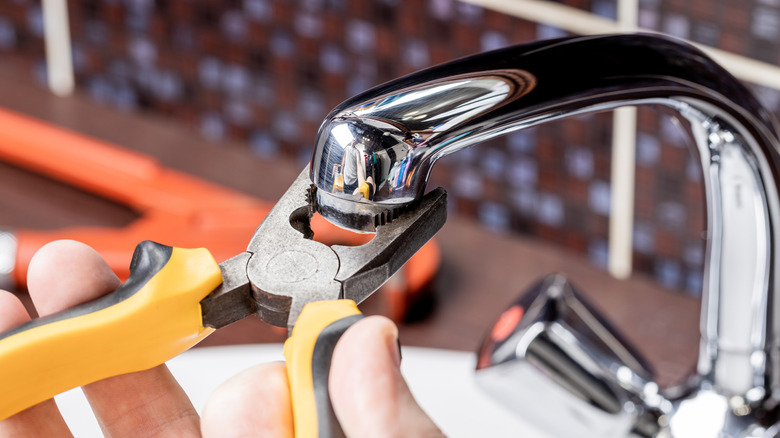You're Destroying Your Bathroom Sink With One Common Mistake
It usually starts with a drip from the faucet, a little leak that annoys you every time you brush your teeth or wash your hands. Most people react the same way. They twist the handle a little tighter, convinced that extra force will stop the problem. It feels like one of those quick-fix solutions for a dripping faucet. But the uncomfortable truth is that the extra twist is exactly what's destroying your bathroom sink. Overtightening your faucet is slowly wrecking your fixture from the inside out.
Why is this mistake so widespread? Because it's instinctive. A dripping tap makes us impatient, and the quickest fix seems to be adding more pressure. The trouble is, faucets aren't designed to withstand that kind of strain. Every extra crank of the handle puts more stress on the internal components. Multiply that over weeks or months, and you're setting up for a bigger, costlier problem than the one you were trying to solve in the first place.
How overtightening is damaging your bathroom sink faucet
When you crank down on a faucet handle, the first part to take the hit is usually the rubber washer. These washers are designed to create a snug seal but with only moderate pressure. Push them past that limit too often, and they start to flatten or wear out entirely. That's why a once-simple drip often comes back even worse after "fixing" it with force. But washers aren't the only casualty. Over time, overtightening can damage the threads that connect the faucet components. Threads are what keep everything screwed together securely, and once they're worn down, the faucet becomes loose and nearly impossible to tighten properly again.
The damage doesn't stop there. Excess pressure can also crack the fittings that hold your faucet in place. Those hairline fractures might go unnoticed at first, but eventually, they become the source of a water leak around the base of the faucet. Unfortunately, these leaks can travel down into your cabinet or countertop, compromising its structure.
Finally, seals inside the faucet can warp under the constant strain. Seals are supposed to keep water exactly where it belongs. However, once they're distorted, the faucet loses its watertight integrity. In short, every tight twist chips away at the very parts designed to keep your sink working smoothly.
What to do instead
If the instinct to overtighten is the problem, the solution is to rethink how you approach a leaky faucet. Instead of cranking the handle until it won't budge, start with the stem nuts. Use a wrench, but handle it carefully. First, tighten everything gently by hand, then turn the wrench only until you feel resistance. The moment it becomes difficult to turn, stop. That's the sweet spot where the faucet is secure without pushing the assembly past its limit.
If the faucet continues to drip, force isn't the answer. Consider replacing its parts to silence a leaky faucet. A worn washer or cartridge is usually the culprit. Swapping it out is both inexpensive and straightforward compared to the damage overtightening can cause. The goal is to fix the root issue rather than fight the symptom.
For homeowners ready to upgrade, ceramic disc faucets are worth considering. Unlike traditional models, they're engineered to operate with minimal force. This reduces both wear and the temptation to overtighten in the first place. In simple words, shift your approach from 'tighten harder' to 'maintain smarter,' and you'll save yourself from costly repairs down the line.


